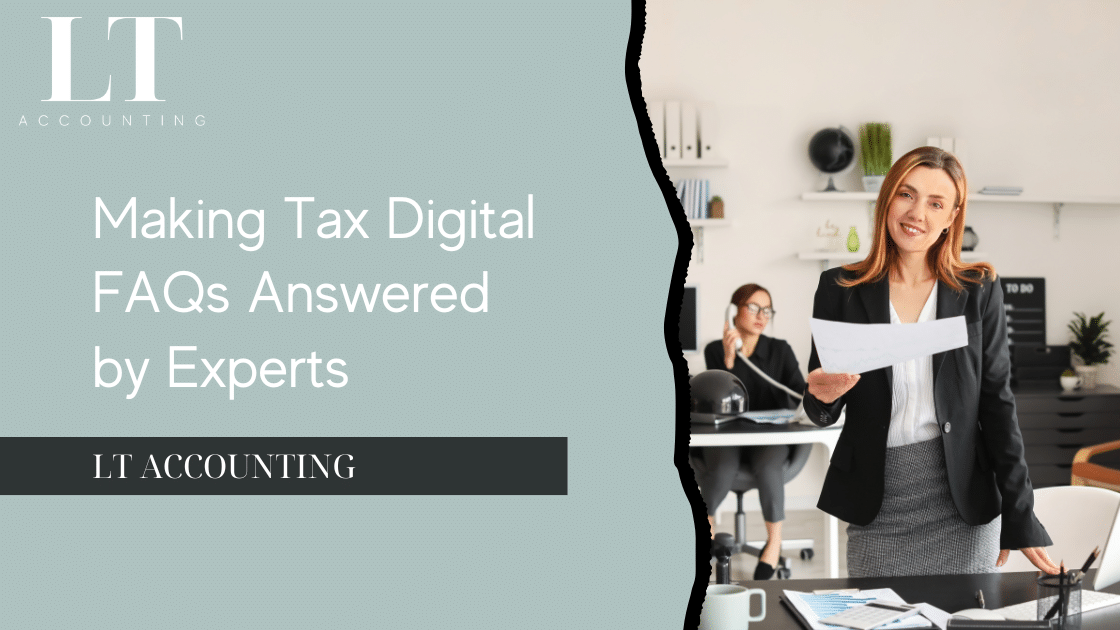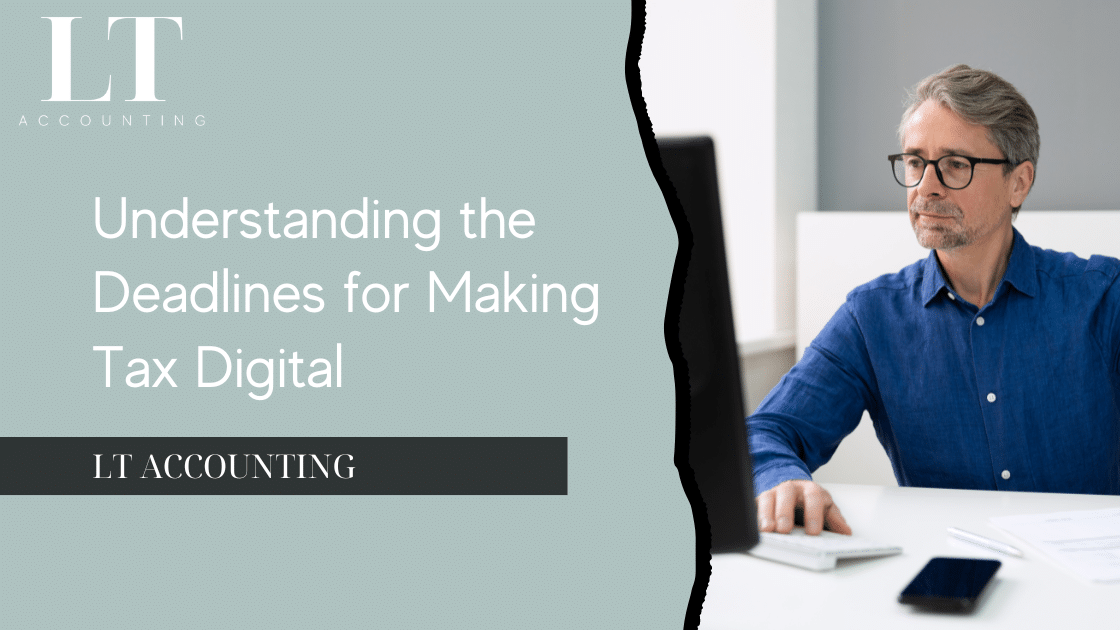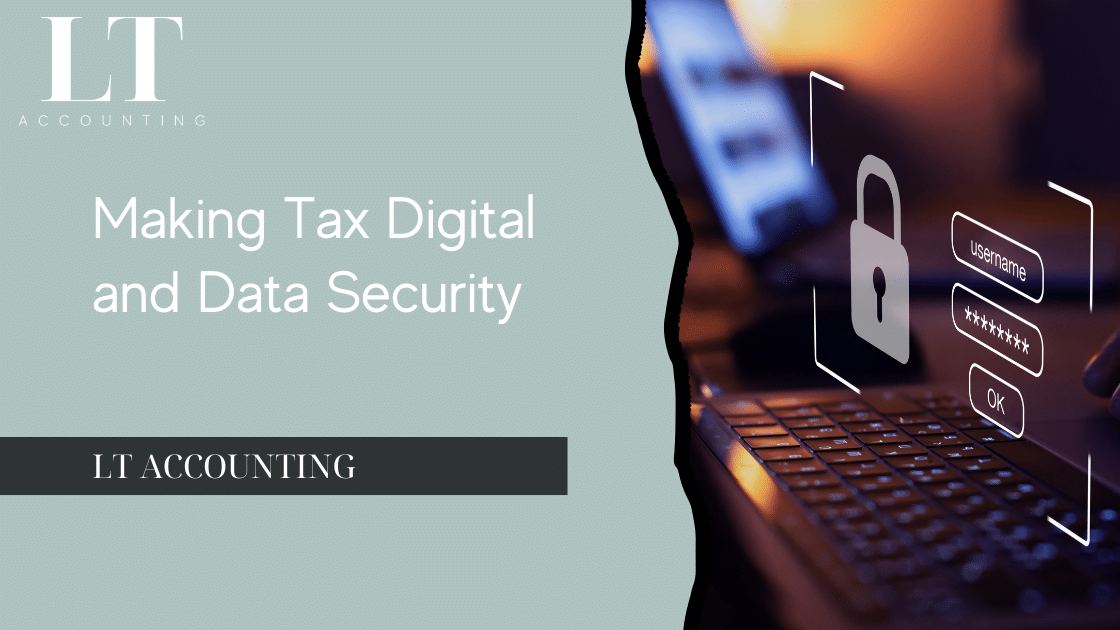In an increasingly digital world, the UK government has recognised the need to modernise its tax system. Making Tax Digital (MTD) is an ambitious initiative by HM Revenue and Customs (HMRC) designed to transform the way businesses and individuals handle their taxes. For self-employed individuals and freelancers, this means transitioning from traditional methods of record-keeping and tax filing to a fully digital system. The aim is to make the tax process more efficient, reduce errors, and ultimately, ensure that more taxes are collected accurately and on time.
However, for those accustomed to managing their finances manually or through basic software, MTD can seem daunting. The transition involves not only adopting new software but also changing how you record, store, and submit your financial information. This guide is designed to help you navigate these changes smoothly, providing step-by-step instructions and practical advice to ensure compliance with MTD while minimising disruption to your business.
Whether you’re a seasoned freelancer with years of experience or a newly self-employed individual just starting out, understanding MTD is crucial. Non-compliance can result in penalties, but with the right preparation, MTD can also bring significant benefits, such as improved financial management and reduced administrative burden. In this guide, we’ll cover everything you need to know to comply with MTD, from the basics of what it entails to choosing the right software and submitting your tax returns digitally.
What is Making Tax Digital (MTD)?
Definition and Purpose
Making Tax Digital (MTD) is a government initiative aimed at bringing the UK tax system into the 21st century by making it easier for individuals and businesses to get their tax right and keep on top of their affairs. At its core, MTD requires taxpayers to keep digital records and use approved software to submit their tax returns to HMRC. This shift from paper-based to digital processes is intended to improve the accuracy of tax reporting, reduce the tax gap (the difference between the amount of tax due and the amount actually collected), and make tax administration more efficient.
MTD is part of a broader government effort to digitise public services, making them more accessible and reducing the likelihood of errors caused by manual entry or paper-based systems. For self-employed individuals and freelancers, this means maintaining their business records digitally, submitting tax information quarterly, and ensuring that they use software compatible with HMRC’s systems.
Key Milestones and Deadlines
The implementation of MTD has been phased, with different deadlines for various groups of taxpayers:
- MTD for VAT: The first phase of MTD began in April 2019 with MTD for VAT. Initially, this applied to VAT-registered businesses with a taxable turnover above the VAT threshold of £85,000. From April 2022, it was extended to all VAT-registered businesses, regardless of turnover.
- MTD for Income Tax Self Assessment (ITSA): The next significant phase is MTD for Income Tax, which will apply to self-employed individuals and landlords with a total business or property income above £50,000 from April 2026. Those with incomes between £30,000 and £50,000 will need to comply from April 2027. This phase will require quarterly updates and an end-of-period statement (EOPS) to be submitted digitally, along with a final declaration.
- MTD for Corporation Tax: Although no specific dates have been set, the government has indicated that MTD for Corporation Tax is expected to be introduced sometime after 2026. This will likely impact incorporated businesses, requiring them to follow similar digital record-keeping and submission processes.
Understanding these milestones is crucial for self-employed individuals and freelancers, as it ensures you know when you need to start complying and allows you to prepare in advance. Missing these deadlines can result in penalties, so it’s important to stay informed and proactive.
Who Needs to Comply with MTD?
Eligibility and Requirements
Making Tax Digital (MTD) is not a one-size-fits-all mandate; its application depends on your specific financial circumstances. As a self-employed individual or freelancer, understanding whether you need to comply with MTD is critical to avoiding penalties and ensuring your tax affairs are in order.
MTD primarily applies to:
- VAT-Registered Businesses:
- If your business is registered for VAT and your taxable turnover exceeds the £85,000 threshold, MTD for VAT is mandatory. This has been in effect since April 2019.
- As of April 2022, even if your turnover is below the £85,000 threshold, if you’re VAT-registered, you are required to comply with MTD.
- This means maintaining digital records and submitting VAT returns using MTD-compatible software.
- Self-Employed Individuals and Landlords:
- Starting from April 2026, MTD for Income Tax Self Assessment (ITSA) will apply to self-employed individuals and landlords with a total business or property income over £50,000.
- Those with incomes between £30,000 and £50,000 will be required to comply from April 2027.
- Under MTD for ITSA, you will need to keep digital records of your income and expenses, submit quarterly updates to HMRC, and file an End of Period Statement (EOPS) annually.
- Exemptions:
- Not everyone is required to comply with MTD. For instance, businesses and individuals with incomes below the threshold (£30,000 as of current legislation) are exempt from MTD for ITSA.
- Additionally, there are exemptions for those who are unable to engage digitally due to reasons such as age, disability, or remoteness of location. To qualify for an exemption, you must apply to HMRC and receive approval.
- Religious societies that cannot use electronic communications are also exempt.
It’s important to stay informed about these thresholds and exemptions, as they can change with new government policies. Regularly reviewing your income levels and consulting with a tax professional can help ensure that you’re meeting your obligations.
Consequences of Non-Compliance
Failing to comply with MTD can result in a range of penalties and financial consequences:
- Initial Penalties:
- HMRC has introduced a points-based penalty system for late submissions under MTD. Each missed deadline will earn you a point, and once you accumulate a certain number of points, you’ll be fined.
- The fine typically starts at £200, but repeated non-compliance can lead to higher penalties.
- Daily Penalties:
- If you continue to ignore your obligations, daily penalties can be imposed. These could be a set amount per day until you bring your filings up to date.
- Interest and Surcharges:
- In addition to penalties, HMRC may charge interest on any unpaid tax due as a result of non-compliance.
- You might also face surcharges if your tax returns are consistently late.
- Reputational Risk:
- Non-compliance with tax obligations can harm your professional reputation, particularly for freelancers who rely on trust and reliability to secure contracts.
- This can also lead to difficulties in securing loans or investments, as financial institutions often assess tax compliance when making lending decisions.
Given these potential risks, it’s crucial to ensure that you’re not only aware of your MTD obligations but are also fully compliant. Regularly reviewing your compliance status, using the right software, and seeking professional advice are all strategies that can help you stay on track.
Preparing for MTD: What You Need to Know
Understanding the Requirements
Preparing for MTD involves more than just signing up for new software; it requires a fundamental shift in how you manage your financial records. Here’s what you need to know to get ready:
- Digital Record-Keeping:
- Under MTD, all your financial records must be kept digitally. This includes records of all sales, expenses, and other income.
- These records should be stored in a format that is compatible with MTD software, allowing them to be easily uploaded to HMRC’s system.
- MTD-Compatible Software:
- You must use software that is compatible with HMRC’s MTD system. This software will allow you to keep digital records and submit your tax returns electronically.
- HMRC has a list of approved software providers, and it’s important to choose one that meets your specific needs as a self-employed individual or freelancer. Popular options include QuickBooks, Xero, and FreeAgent.
- Quarterly Updates:
- MTD for ITSA requires you to submit quarterly updates to HMRC. These updates provide a summary of your income and expenses for the quarter and must be submitted using your MTD-compatible software.
- This is a significant change from the traditional annual tax return process and requires more frequent attention to your financial records.
Evaluating Your Current Systems
Before you can transition to MTD, it’s essential to assess your current record-keeping and accounting systems. Here’s how to evaluate whether you’re ready for MTD:
- Audit Your Current Processes:
- Start by reviewing how you currently track your income and expenses. Are you using spreadsheets, manual logs, or outdated software? If so, these methods may not be sufficient for MTD compliance.
- Identify gaps where your current processes do not meet MTD requirements, such as the lack of digital records or software that isn’t compatible with HMRC’s system.
- Determine Software Needs:
- Consider what features you need in MTD software. For example, if you have multiple income streams, you’ll need software that can handle complex financial data.
- If you have employees or contractors, you might also need payroll integration. Look for software that not only meets HMRC’s requirements but also integrates smoothly with your existing systems.
- Plan for Training and Transition:
- If you’re not familiar with digital accounting software, consider setting aside time to learn the basics or invest in training. Many software providers offer tutorials and support to help you get started.
- Plan your transition to digital records well in advance of your MTD deadline to avoid last-minute rushes. This might involve gradually shifting to digital invoices, receipts, and logs.
By thoroughly understanding the requirements and evaluating your current systems, you can ensure a smooth transition to MTD, minimising disruptions to your business and avoiding the pitfalls of non-compliance.
Choosing the Right MTD Software
Selecting the right software for Making Tax Digital (MTD) compliance is a crucial step for self-employed individuals and freelancers. The software you choose will not only determine how easily you can transition to digital tax processes but also how efficiently you can manage your ongoing financial responsibilities. Here are the key features to look for when selecting MTD-compatible software:
- HMRC Compatibility:
- The most critical feature is that the software must be approved by HMRC for MTD. This ensures that it can directly connect to HMRC’s systems for submitting digital tax returns and maintaining digital records.
- HMRC provides a list of software that is compatible with MTD on their website, which includes options tailored to different types of businesses and needs.
- Ease of Use:
- The software should have an intuitive interface that makes it easy to input data, generate reports, and submit tax returns. If you’re not comfortable with complex software, look for options that offer user-friendly dashboards and simple navigation.
- Many MTD software providers offer demo versions or free trials, which can be a good way to test the usability before committing.
- Automatic Data Entry and Integration:
- Look for software that can automatically import data from your bank accounts, invoices, and receipts. This feature reduces the time you spend on manual data entry and helps minimise errors.
- Integration with other tools you use, such as invoicing apps or payment processors, can streamline your financial processes and ensure that all your data is captured accurately.
- Quarterly Reporting:
- Since MTD for ITSA requires quarterly updates to HMRC, your software should make it easy to generate and submit these reports. This includes automated reminders and prompts to ensure you meet deadlines.
- Some software also offers forecasting tools that can predict your quarterly tax obligations, helping you set aside funds and avoid surprises.
- Customisation and Scalability:
- As a self-employed individual or freelancer, your income and expenses may vary significantly from month to month. Choose software that allows you to customise your reporting categories and adapt to changes in your financial situation.
- If you plan to grow your business, consider whether the software can scale with you, handling more complex transactions or additional users as needed.
- Customer Support and Training:
- Reliable customer support is essential, especially if you encounter issues or have questions about MTD. Look for software providers that offer comprehensive support options, including phone, email, chat, and online resources.
- Training materials, webinars, and tutorials can be extremely valuable, particularly if you’re new to digital accounting.
Top Software Options
Here are some popular MTD-compatible software options for self-employed individuals and freelancers in the UK:
- QuickBooks:
- QuickBooks is one of the most widely used accounting software solutions, known for its user-friendly interface and comprehensive features.
- It offers automatic bank feeds, easy invoice management, and robust reporting tools, making it a strong option for those new to digital accounting.
- QuickBooks is fully compliant with MTD and offers packages tailored to different business sizes and needs.
- Xero:
- Xero is another leading option, particularly praised for its powerful integrations and cloud-based accessibility.
- It includes features such as real-time bank feeds, online invoicing, and payroll management, which can be especially useful for freelancers who manage multiple income streams.
- Xero’s MTD functionality is integrated into all its packages, ensuring compliance with minimal fuss.
- FreeAgent:
- FreeAgent is designed specifically with freelancers and small business owners in mind, offering a straightforward approach to managing finances.
- It includes features such as expense tracking, time tracking, and project management, which can be beneficial if you bill clients by the hour or project.
- FreeAgent is MTD-compatible and is often included as a free option for customers of certain UK banks, making it a cost-effective choice.
- Sage Business Cloud Accounting:
- Sage is a long-established name in accounting software, known for its reliability and wide range of features.
- Sage Business Cloud Accounting offers automatic bank reconciliation, VAT management, and a variety of reporting tools.
- It is fully MTD-compliant and offers scalable solutions that can grow with your business.
- KashFlow:
- KashFlow is another option tailored to UK businesses, with a focus on simplicity and ease of use.
- It offers features like automated invoicing, expense tracking, and VAT submission directly to HMRC.
- KashFlow’s MTD compliance is built into the software, and it provides clear, step-by-step guides for setting up and using the platform.
Choosing the right MTD software depends on your specific needs, preferences, and budget. Consider starting with a trial version or a demo to see which software feels most comfortable to use. Remember, the goal is to simplify your tax and accounting processes, so opt for software that will make these tasks as seamless as possible.
Step-by-Step Guide to Implementing MTD
Once you’ve selected the right software, the next step is implementing Making Tax Digital in your business operations. This section provides a detailed, step-by-step guide to help you get started.
Set Up Your Digital Tax Account
The first step in complying with MTD is setting up a digital tax account with HMRC:
- Register for an HMRC Online Account:
- If you don’t already have one, you need to register for an online account with HMRC. This account will be the central hub where you manage your tax obligations, including MTD submissions.
- You can register via the HMRC website, providing your personal details and setting up security measures such as a password and two-factor authentication.
- Sign Up for MTD:
- Once your online account is set up, you need to sign up for MTD. This is done through the HMRC website, where you’ll be prompted to provide details about your business and VAT registration (if applicable).
- After signing up, you’ll receive confirmation from HMRC that your account is ready for MTD.
Select and Register for MTD Software
With your digital tax account in place, the next step is to select and register your MTD-compatible software:
- Choose Your Software:
- Based on the earlier discussion of key features and top software options, choose the MTD-compatible software that best fits your needs.
- Most software providers offer a registration process that includes entering your business details, setting up bank feeds, and customising your account settings.
- Link Your Software to HMRC:
- After registering with your chosen software, you need to connect it to your HMRC account. This typically involves entering your HMRC login details into the software, allowing it to directly communicate with HMRC’s systems.
- Once connected, your software will automatically handle the submission of digital tax returns and other MTD requirements.
Maintain Digital Records
One of the core requirements of MTD is maintaining digital records of your income and expenses:
- Start Recording Digitally:
- Use your MTD software to begin recording all your financial transactions digitally. This includes sales, expenses, invoices, and receipts.
- Make sure to regularly update your records, ideally as transactions occur, to ensure accuracy and compliance.
- Use Bank Feeds:
- Most MTD software allows you to link your bank accounts directly to the software. This feature automatically imports your transactions, reducing the need for manual entry and helping ensure your records are up-to-date.
- Regularly reconcile your bank transactions within the software to avoid discrepancies.
Submit Your First MTD VAT Return
For those required to comply with MTD for VAT, submitting your first VAT return through the new system is a critical step:
- Prepare Your VAT Return:
- Use your MTD software to generate your VAT return based on the digital records you’ve maintained. The software will calculate the VAT due based on your recorded sales and purchases.
- Review the VAT return carefully to ensure all figures are correct and that you’ve accounted for any VAT adjustments.
- Submit Through MTD Software:
- Once you’re satisfied with the accuracy of your VAT return, submit it directly to HMRC through your MTD software. The software will send the return electronically, and you’ll receive a confirmation from HMRC that your submission has been received.
Troubleshooting Common Issues
As with any new system, there may be challenges when first implementing MTD. Here’s how to address some common issues:
- Connection Issues:
- If your software struggles to connect to HMRC, check your internet connection and ensure your login details are correct. Sometimes, issues can arise from temporary outages on HMRC’s end, so trying again later may resolve the problem.
- Contact your software provider’s customer support if connection issues persist.
- Data Discrepancies:
- If your digital records don’t match your bank statements or HMRC records, it’s important to reconcile your accounts. This might involve manually reviewing transactions to ensure they’ve been entered correctly.
- Many MTD software solutions offer reconciliation tools that can help match your records with your bank feeds, highlighting discrepancies for you to correct.
- Missed Deadlines:
- If you miss a submission deadline, submit your returns as soon as possible to minimise penalties. Your MTD software should alert you to upcoming deadlines, but it’s important to keep your own calendar as well.
- Contact HMRC if you believe there are extenuating circumstances that caused the delay, as they may consider reducing penalties.
By following these steps, you can effectively implement MTD in your business, ensuring compliance with HMRC’s requirements and making your tax processes more efficient.
Ongoing Compliance: Tips for Maintaining MTD Standards
Implementing Making Tax Digital (MTD) is just the beginning; ongoing compliance is crucial to avoid penalties and ensure your tax processes remain efficient and accurate. Here’s how to maintain MTD standards in your daily business operations:
Regular Updates and Record Keeping
One of the core principles of MTD is maintaining up-to-date digital records. This requires consistent attention to your financial data and regular updates to your records:
- Daily or Weekly Data Entry:
- Make it a habit to update your financial records daily or weekly. This might include entering new sales, recording expenses, and reconciling bank transactions.
- Many MTD-compatible software solutions offer mobile apps that allow you to input data on the go, making it easier to stay on top of record-keeping.
- Automate Where Possible:
- Utilise the automation features in your MTD software, such as automatic bank feeds and invoicing. Automation not only saves time but also reduces the risk of human error.
- Set up automatic reminders for key tasks, such as reconciling accounts or submitting quarterly updates, to ensure nothing falls through the cracks.
- Regular Reconciliation:
- Regularly reconcile your accounts to ensure that your digital records match your actual bank transactions. This helps catch any discrepancies early and keeps your financial data accurate.
- Most MTD software provides easy-to-use reconciliation tools, making this process straightforward and efficient.
- Stay Updated on MTD Changes:
- HMRC occasionally updates MTD requirements, so it’s important to stay informed about any changes that might affect your compliance.
- Subscribe to HMRC updates or consult with your accountant regularly to ensure you’re aware of any new regulations or deadlines.
Handling Complex Tax Situations
While MTD simplifies many aspects of tax reporting, certain complex tax situations may still require careful attention:
- Managing Multiple Income Streams:
- If you have multiple sources of income (e.g., from freelancing, rental properties, or investments), ensure that your MTD software can handle the complexity.
- Use the software to categorise income streams separately and track the specific expenses associated with each.
- Dealing with VAT Adjustments:
- If your business is VAT-registered, you may need to make adjustments for items like reverse charges, bad debt relief, or partial exemptions. Ensure that your software can accommodate these adjustments and apply them correctly in your VAT returns.
- Consider seeking advice from an accountant if you encounter complicated VAT scenarios, as mistakes can lead to costly penalties.
- Managing Large Volumes of Transactions:
- If your business handles a large volume of transactions, maintaining accurate records can be challenging. Use bulk upload features or integrations with payment processors to ensure all transactions are captured.
- Regularly review and audit your data to ensure that high volumes of transactions don’t lead to errors or omissions in your records.
Staying Organised and Proactive
Maintaining MTD compliance requires a proactive approach to your financial management. Here are some strategies to help you stay organised:
- Use a Compliance Calendar:
- Create a compliance calendar that includes all MTD deadlines, such as quarterly submission dates and VAT payment deadlines. This ensures you’re always aware of upcoming obligations.
- Integrate this calendar with your daily work schedule to avoid last-minute scrambles to meet deadlines.
- Regularly Review Financial Health:
- Use your MTD software’s reporting tools to regularly review your business’s financial health. Look at metrics like cash flow, profit margins, and tax liabilities to get a clear picture of where you stand.
- Regular reviews help you identify potential issues early, allowing you to address them before they become significant problems.
- Seek Professional Help When Needed:
- If you’re unsure about any aspect of MTD or your tax situation, don’t hesitate to seek professional advice. Accountants and tax advisors can provide valuable guidance and help you navigate complex scenarios.
- Consider having a regular check-in with your accountant to ensure you’re on track with your MTD obligations.
By maintaining diligent records, staying informed about MTD requirements, and being proactive in your financial management, you can ensure ongoing compliance and avoid the pitfalls of non-compliance.
Benefits of MTD for the Self-Employed and Freelancers
While Making Tax Digital may initially seem like an additional burden, especially for those used to traditional methods, it offers several benefits that can positively impact your business. Here are some of the key advantages of MTD for self-employed individuals and freelancers:
Efficiency and Accuracy
One of the most significant benefits of MTD is the increase in efficiency and accuracy in managing your tax affairs:
- Reduced Errors:
- Digital record-keeping and automatic data entry significantly reduce the chances of errors compared to manual processes. By using MTD-compatible software, you can minimise common mistakes such as transposing numbers, miscalculating totals, or missing entries altogether.
- This accuracy is particularly important when submitting VAT returns or income tax information, where even small errors can lead to penalties.
- Time Savings:
- Automation features in MTD software, such as automatic bank feeds, invoicing, and expense tracking, save time by reducing the amount of manual data entry you need to do.
- This allows you to focus more on your business activities rather than getting bogged down in administrative tasks.
- Streamlined Processes:
- MTD brings all your financial data into one place, making it easier to manage and review. With everything accessible via your MTD software, you can quickly generate reports, track your financial health, and submit tax returns without needing to navigate multiple systems or spreadsheets.
Financial Management and Planning
MTD isn’t just about tax compliance; it can also enhance your overall financial management and planning capabilities:
- Real-Time Financial Insights:
- With digital record-keeping and regular updates, MTD software provides real-time insights into your financial status. This allows you to monitor your cash flow, profit margins, and expenses more closely.
- Real-time data can help you make informed business decisions, such as when to invest in new equipment or how to manage your budget during slow periods.
- Better Cash Flow Management:
- The requirement to submit quarterly updates to HMRC under MTD for ITSA means you’ll have a more regular overview of your income and expenses. This helps in planning for tax payments and ensuring you set aside the necessary funds throughout the year.
- Improved cash flow management reduces the risk of financial surprises, such as struggling to pay a large tax bill at the end of the year.
- Enhanced Tax Planning:
- MTD software often includes tools for tax forecasting, which can help you estimate your tax liabilities well in advance. This allows you to plan more effectively and take advantage of tax-saving opportunities, such as making pension contributions or claiming allowable expenses.
- By staying on top of your tax obligations year-round, you can avoid the stress of last-minute tax planning and ensure you’re making the most of available tax reliefs.
Improved Compliance and Reduced Risk
Adopting MTD can also reduce the risks associated with tax compliance:
- Easier HMRC Interactions:
- MTD streamlines your interactions with HMRC, as your software handles the direct submissions of your tax returns. This reduces the likelihood of errors that can arise from manually filling out forms or miscommunicating with HMRC.
- The software also keeps a digital audit trail, which can be invaluable if HMRC ever queries your tax returns.
- Avoidance of Penalties:
- By complying with MTD, you reduce the risk of incurring penalties for late submissions or errors in your tax returns. The software’s reminders and validation checks help ensure that your submissions are accurate and on time.
- The points-based penalty system introduced by HMRC makes it crucial to maintain consistent compliance, and MTD software plays a key role in achieving this.
- Data Security:
- MTD software typically includes robust security measures to protect your financial data. This includes encryption, secure login processes, and regular data backups.
- By using MTD software, you ensure that your sensitive financial information is stored securely, reducing the risk of data breaches or loss.
Overall, while the transition to MTD may require some initial effort, the long-term benefits can significantly outweigh the challenges. Enhanced efficiency, better financial management, and improved compliance are just a few of the ways that MTD can contribute to the success and sustainability of your business.
Common Challenges and How to Overcome Them
Despite the many benefits of Making Tax Digital, there are some common challenges that self-employed individuals and freelancers may face during the transition. Understanding these challenges and how to overcome them can help you navigate the process more smoothly.
Technical and Practical Issues
One of the most common challenges with MTD is the technical aspect of adopting new software and systems:
- Learning Curve:
- For those who are not tech-savvy, the transition to digital accounting and tax submission can be intimidating. The learning curve associated with new software might seem steep, especially if you’re used to manual record-keeping.
- Solution: Start by choosing user-friendly software with strong customer support and training resources. Many MTD-compatible software options offer tutorials, webinars, and guides to help you get started. Consider allocating time for training or consulting with an expert to help you get up to speed.
- Software Integration:
- If you already use certain tools or systems for invoicing, payroll, or expense tracking, integrating these with your new MTD software can be challenging.
- Solution: Look for MTD software that offers integrations with the tools you already use. Most leading MTD solutions can connect with common business software, allowing for seamless data transfer. If integration isn’t possible, you may need to manually import data, so ensure that the software you choose makes this process as easy as possible.
- Technical Glitches:
- Like any software, MTD solutions can experience technical issues, such as connection problems with HMRC or bugs within the software itself.
- Solution: Regularly update your software to the latest version to minimise glitches. Maintain a backup of your records in case of any issues, and have a support plan in place. Many software providers offer technical support, so don’t hesitate to reach out if you encounter problems.
Adapting to New Processes
Another challenge is adapting to the new processes required by MTD, especially for those who have been operating their business using traditional methods:
- Changing Habits:
- Shifting from paper records or spreadsheets to digital record-keeping can require a significant change in your daily habits. It may take time to adjust to regularly entering data into your software or reconciling accounts.
- Solution: Develop a routine that incorporates these new tasks into your daily or weekly workflow. Setting aside specific times each week for financial management can help you maintain consistency. Over time, these tasks will become second nature, reducing the initial burden.
- Managing Quarterly Reporting:
- The requirement to submit quarterly updates to HMRC under MTD for ITSA is a significant change from the traditional annual tax return. This increased frequency can be challenging to manage, especially during busy periods.
- Solution: Use your MTD software’s reminders and alerts to keep track of deadlines. Break down your financial management tasks into smaller, manageable chunks, so you’re not overwhelmed by the quarterly submissions. Planning ahead and maintaining up-to-date records will make the quarterly process smoother and less stressful.
- Dealing with Resistance to Change:
- Some self-employed individuals and freelancers may resist the change to MTD, preferring to stick with familiar methods, even if they’re less efficient.
- Solution: Focus on the benefits of MTD, such as time savings, reduced errors, and better financial insights. Understanding the advantages can help overcome resistance. If the transition feels overwhelming, consider seeking support from an accountant or a tax professional who can guide you through the process.
By recognising these challenges and implementing strategies to address them, you can make the transition to MTD smoother and more manageable. The key is to approach the change with a positive mindset and be proactive in seeking solutions when difficulties arise.
Conclusion
Transitioning to Making Tax Digital may initially seem like a daunting task, especially for self-employed individuals and freelancers who have been managing their finances manually. However, with the right preparation, tools, and mindset, MTD can offer significant benefits, including improved efficiency, better financial management, and enhanced compliance.
By following the step-by-step guidance provided in this article, you can ensure that your transition to MTD is smooth and that you remain compliant with HMRC’s requirements. Regularly updating your records, choosing the right software, and staying informed about changes to MTD regulations will help you avoid penalties and keep your business running smoothly.
If you ever feel uncertain about any aspect of MTD, don’t hesitate to seek professional advice. LT Accounting is here to assist you with all your MTD needs, offering expert guidance to help you navigate the complexities of digital tax compliance. Contact us today to ensure your business is fully prepared for Making Tax Digital.





